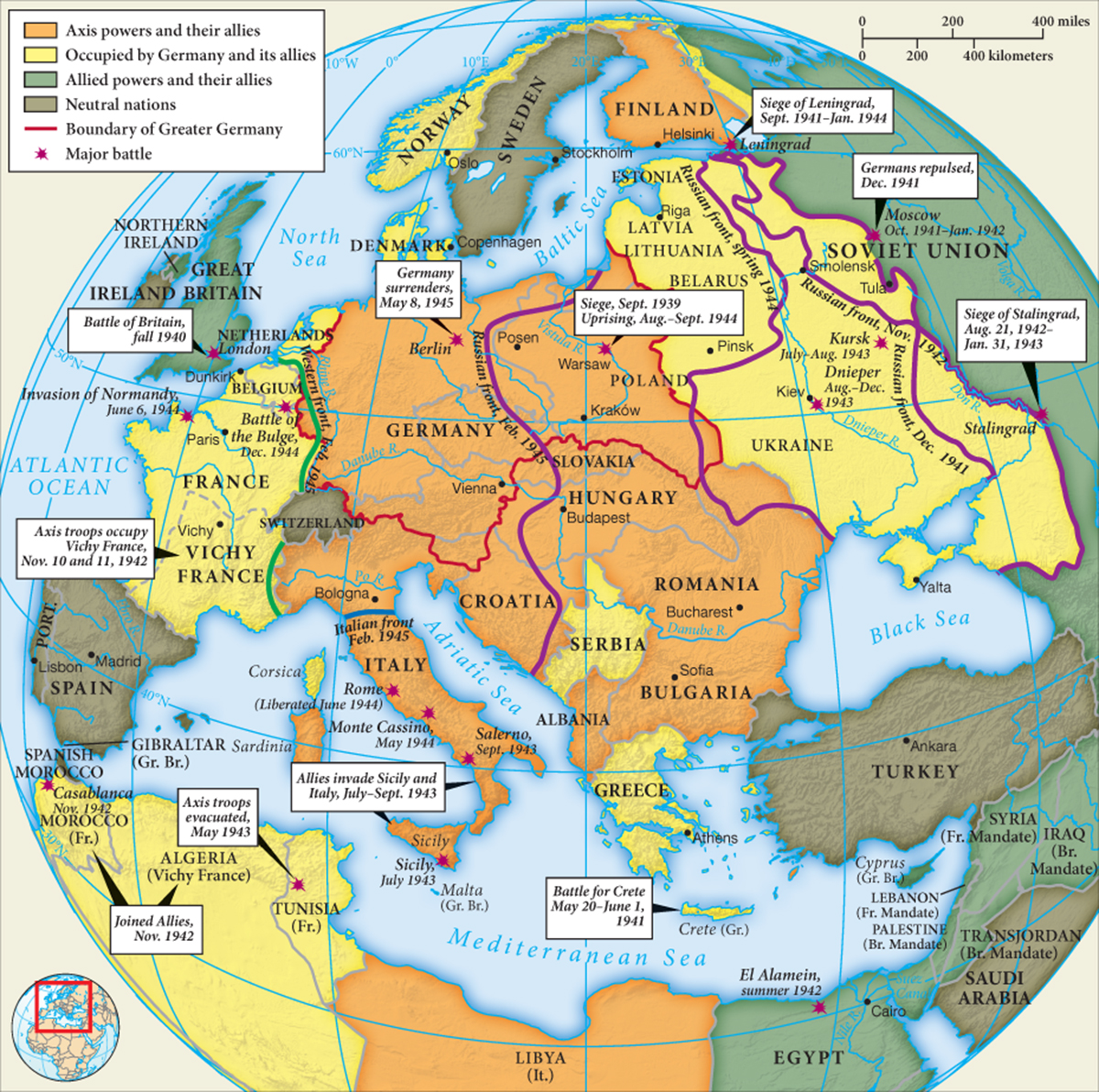The Road to War in Europe
If Japan was the dissatisfied power in Asia, Nazi Germany clearly occupied that role in Europe. As a consequence of their defeat in World War I and the harsh terms of the Treaty of Versailles, many Germans harbored deep resentments about their country’s position in the international arena. Taking advantage of those resentments, the Nazis pledged to rectify the treaty’s perceived injustices. Thus, to most historians, the origins of World War II in Europe lie squarely in German aggression, although scholars acknowledge that events took many twists and turns and that German aggression was encouraged by the initial unwillingness of Britain, France, or the Soviet Union to confront it forcefully. If World War I was accidental and unintended, World War II was deliberate and planned—
War was central to the Nazi agenda in several ways. Nazism was born out of World War I, the hated treaty that ended it, and the disillusioned ex-
Slowly at first and then more aggressively, Hitler prepared the country for war as he also pursued territorial expansion. A major rearmament program began in 1935. The next year, German forces entered the Rhineland, which the Treaty of Versailles had ordered demilitarized. In 1938, Germany annexed Austria and the German-

Although Germany was central to both world wars, the second one was quite different from the first. It was not welcomed with the kind of mass enthusiasm across Europe that had accompanied the opening of World War I in 1914. The bitter experience of the Great War suggested to most people that only suffering lay ahead. The conduct of the two wars likewise differed. The first war had quickly bogged down in trench warfare that emphasized defense, whereas in the second war the German tactic of blitzkrieg (lightning war) coordinated the rapid movement of infantry, tanks, and airpower over very large areas.
Such military tactics were initially successful and allowed German forces, aided by their Italian allies, to sweep over Europe, the western Soviet Union, and North Africa. The tide began to turn in 1942 when the Soviet Union absorbed the German onslaught and then began to counterattack, slowly and painfully moving westward toward the German heartland. The United States, with its enormous material and human resources, fully joined the struggle against Germany in 1942 and led the invasion of northern France in 1944, opening a long-